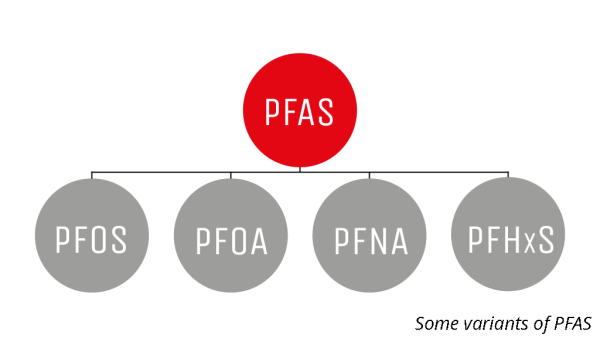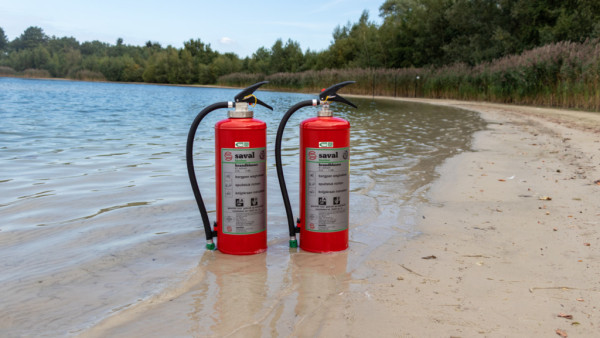The earth offers a beautiful living environment for people, animals and plants. Land, water and air are essential for humans to survive and fortunately more and more people are aware of this. Since the 1970s, care for the environment has become increasingly self-evident. Unfortunately, this concern is often limited to visible pollution and deterioration. Everyone understands that you have to intervene when forests die, rivers silt up with dirt and the oceans become polluted with plastic waste.
 Invisible pollution due to man-made chemicals causes a slow, but in the long term equally serious, damage to our environment. Well-known examples are residues of medicines, pesticides and coatings.
Invisible pollution due to man-made chemicals causes a slow, but in the long term equally serious, damage to our environment. Well-known examples are residues of medicines, pesticides and coatings.
But fluorine compounds from fire-fighting foam are also increasingly found in places where they do not belong. And no, that is not the fluorine found in toothpaste, but a chemical fluorine compound that is comparable to the non-stick coating of Tefal pans. These fluorine compounds are very strong, but do not break down if they end up in the environment, which is why these substances are also called 'forever chemicals'. The National Institute for Public Health and the Environment (RIVM) calls these perfluorinated compounds (PFAS) Substances of Very High Concern (ZZS).

A piece of plastic is easy to clean up and many other materials are broken down by nature itself. This does not apply to these fluorosurfactants. These substances do not break down but accumulate in the fatty tissues of animals that live in the sea. And so they can eventually even end up in the human food chain.
Global pollution from fluorochemicals is still limited, but if we do nothing, the concentrations will continue to rise and also pose a danger to human health. The only option we have is to prevent fluorosurfactants from ending up in the environment. And with Saval technology is that possible!
Our solution: Bioclass F3 fluorine-free fire extinguishers
The new Bioclass F3 extinguishing foams are completely fluorine-free, without making concessions to the extinguishing capacity, on both solids and liquids. The Bioclass F3 foam extinguishers are an excellent choice for the most common fire risks in offices, education, shops, healthcare and light industry. With Bioclass F3 the choice is simple: choose safe and choose our environment.

PFAS-free for fire brigades and industry
Fluorine-free foam types are now also available for the fire brigade and for the protection of major risks in the (petro)chemical industry. However, this often requires adjustment of systems. Our specialists will work with you to identify the current fire risks and determine whether fluorine-free is possible in your situation and what installation adjustments are required. We will tackle this from our Foam Transition Program.
Fluorine-free practice
You can always practice fluorine-free. Our special Practiclass Green exercise foam is 100% fluorine-free and also contains no harmful preservatives. This special concentrate, with a mixing ratio of 3%, behaves in all respects like a normal foam so that not only firefighting is practiced, but also the hoses, intermediate mixers and nozzles are tested.
And what if fluorine is necessary?
Fortunately, a fluorine-free foam extinguisher is available for all fires. For A and B fires, for grease fires (F) and even for battery fires. Fluorine-containing fire extinguishers are outdated. This is slightly different for foam systems.
Our philosophy is clear: if fluorosurfactants are necessary, ensure that they do not end up unnecessarily in the environment. Saval has various techniques in-house for this. Our advanced FoamTronic foam mixing system is the solution for large foam systems. This computer-controlled mixing system ensures that not one drop of concentrate is consumed too much. The system makes accurate testing easy without releasing fluorine-containing wastewater and without consuming expensive foam concentrate. With Saval's solutions, ecology and economy go hand in hand.